S800 FAQ
1. What's in the box?
It contains an EMEET SmartCam S800, a 1.5m USB3.0 cable, and a quick start guide.

2. How can I turn the EMEET SmartCam S800 on/off?
Turn on
Plug the USB into your webcam, and plug the other end of the USB cable into the computer.
Then open the software you want to use with the webcam, the device status indicator will turn white.
Turn off
Unplug the USB cable from your computer or laptop, the device will automatically turn off.
Plug-and-play supports your computer to recognize the webcam immediately.
If your computer does not instantly recognize the webcam, try plugging into a different USB port or restarting the computer.

3. Why is it necessary to use a USB 3.0 interface to connect to S800?
The rated output current of USB 3.0 on a computer is 900mA, while the rated output current of USB 2.0 is 500mA. The rated current of S800 is 700mA.
However, some computers may fail to drive the S800 when USB ports are abnormal or when a HUB is used to connect the S800. We recommend the following:
1. Please connect S800 to the USB 3.0 port with the supplied USB cable.
2. If you want to connect S800 to a HUB, please use a HUB with a separate power supply to connect to S800.
4. How to install the webcam on a tripod?
Look for a 1/4 threaded hole in the bottom of the camera.
Twist the webcam and tripod together until they are snugly joined.
Place your webcam with the tripod anywhere you desire to the best position to frame yourself.
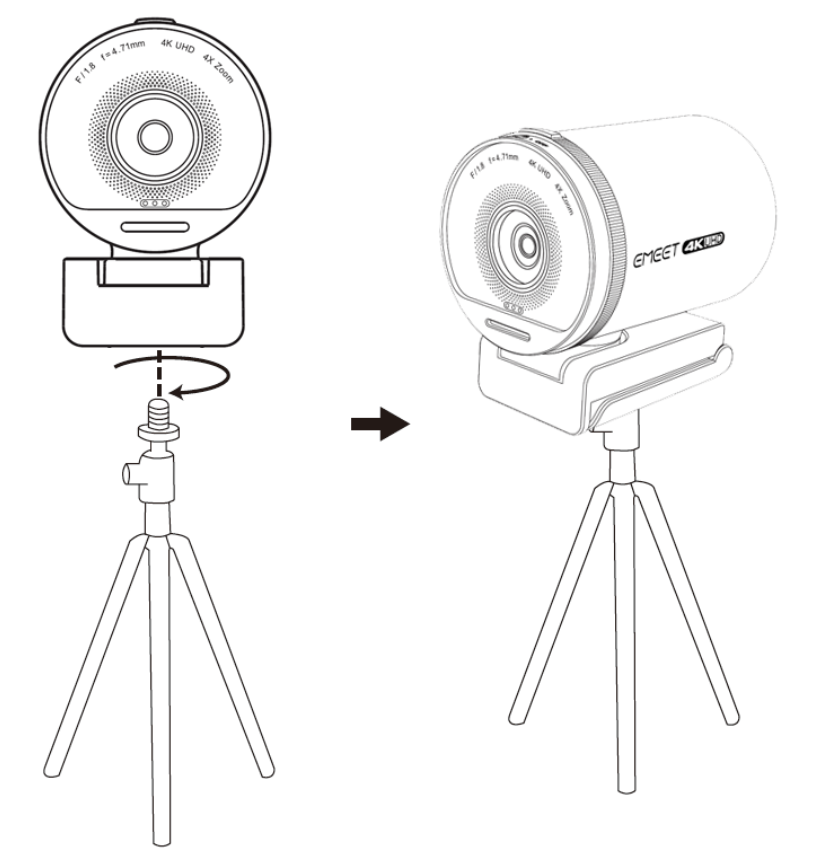
5. How to install the webcam on the PC?
Place your webcam on a computer, laptop, or monitor at a position you desire.
Unfold the adjustable clip so it fits the top of your monitor or laptop screen.
Manually adjust the webcam up/down to the best position to frame yourself.

6. How to protect my privacy?
The camera is attached with a rotation privacy lens cover, which you can use to block the lens when it's not in use. This guarantees nobody will be able to record video of you while the camera is plugged in. No need to worry about privacy security issues.
Please follow the steps below to use it.
1.Rotate the privacy cover switch to open privacy cover in case of protecting personal privacy.
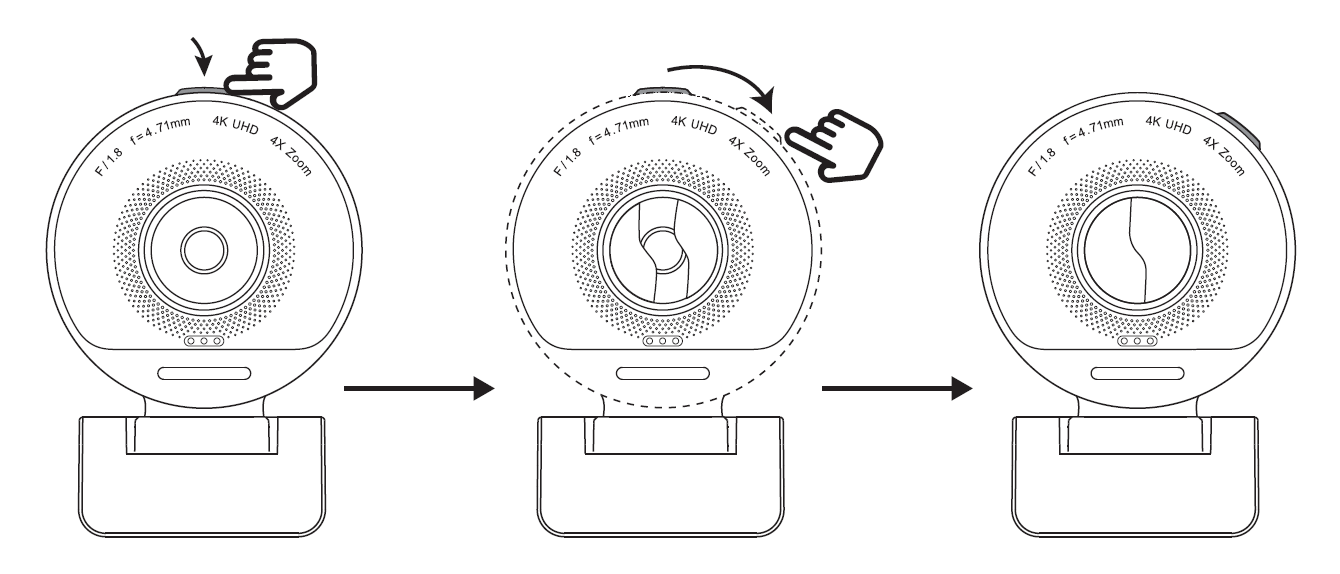
7. How do I change the video resolution?
1. If the platform offers the choice of changing the resolution, you can adjust it directly.
2. You can also adjust the resolution using the built-in camera software of your computer; the setting will be saved on the S800. Please follow the steps below.
Find the built-in camera software of your computer.
Click the switch button on the upper right corner to change the camera to the S800. Click the setting button in the upper left corner to enter the setting interface.


Change the video quality according to your needs.


Note:
When using a USB 3.0 interface, the maximum supported output resolution is 4K.
When using a USB 2.0 interface, the maximum supported output resolution is 1080P.
8. How do I adjust the video settings?
1. Connect the device to the computer via USB cable.
2. Turn on the eMeetLink software and enter the setting interface.
3. When choosing the customization filter, you can adjust the brightness, contrast, sharpness, saturation, and white balance according to your need.
4. If you want to restore all settings, just click "Restore Default Settings".
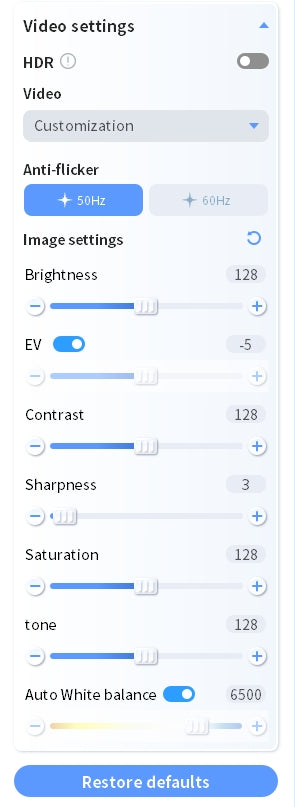
9. What are the focusing modes of S800?
S800 has two focusing modes: face tracking and central area focusing. The default mode is face tracking, which can be switched and adjusted through EMEETLINK.
Face tracking:
When there are faces in the frame, the camera will prioritize focusing on the faces. This is suitable for meetings, live events, and other scenarios where people are the main focus of the frame. During the focusing process, fast movements should be avoided as they may impact the accuracy of the tracking.
Central area focusing:
The camera focuses on the object in the central area of the frame. This is suitable for live events where objects are in focus rather than people.
Central area focusing is generally faster than face tracking, as the camera only needs to focus on the object in the central area.
In addition, it is recommended to keep the camera in a fixed position during use to avoid any shaking or movement that may slow down the focusing process.
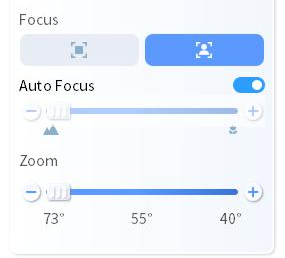
10. What are the metering modes of S800?
S800 has four metering modes, which can be switched and adjusted via EMEETLINK.
Center-weighted metering: The camera measures the light in the central area of the frame and uses it as a reference to meter the light in the rest of the frame.
Global metering: The camera measures the light across the entire scene and calculates the exposure value based on the average light of the frame.
Spot metering: The camera measures the light intensity of a specific point and calculates the exposure based on the brightness value of that point. This mode is suitable for shooting subjects that are relatively small, or when you need to control the exposure of a specific area of the frame.
Face detection metering: The camera measures the light based on the area where faces are detected. This mode is suitable for shooting portraits, as the camera automatically meters the light on the face to ensure appropriate exposure.
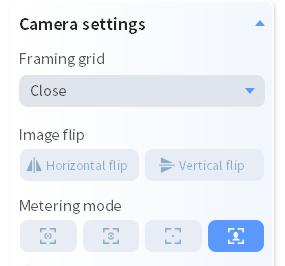
11. What is HDR?
HDR is short for High Dynamic Range, which is an image processing technology that can capture a wider range of brightness in photos and display more details by doing so.
When taking photos in high-contrast scenes, such as strong backlight or extreme contrast, HDR can balance the shadows and highlights in the photo, making the image more natural-looking.
To use HDR, you need to open it on EMEET LINK by accessing the settings of the software.

12. How do I update the software of the webcam?
Please download the EMEET PC software eMeetLink first.
1. Connect the device to the computer via USB cable.
2. Turn on the eMeetLink and enter the settings interface.
3. Click upgrade to update the firmware.
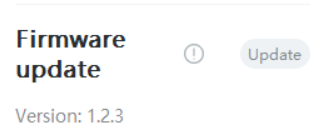
4. The update needs 5-15 mins. In this period, you will see a progress bar to let you know the status of the update.
5. Once the update finishes, pls restart the webcam.
Kindly note: During the upgrade, do not disconnect the USB cable.
13. How do I change the video anti-flicker parameter?
Video flicker can occur if the EMETE SmartCam S800 is not set to the correct geographical region.
Please follow the steps below to change the video anti-flicker parameter:
1. Connect the device to your computer via USB cable.
2. Download and install the EMEET PC tool eMeetLink.
3. Open the eMeetLink software and enter the setting interface.
4. Then select the right anti-flicker parameter according to your regions.

Note: In general, the frequency should be adjusted to 60Hz in the United States. The Chinese mainland, Japan, Singapore, and Europe are transferred to 50Hz, with Japan's Kanto to 50HZ, Kansai to 60HZ.
14. How do I set the webcam as the default video/audio device in streaming software?
When the EMETE SmartCam S800 is connected, it will be automatically detected and set as the default video and audio device in the computer system.
To manually set the webcam as the default video and audio device in streaming software, follow the steps below.
1. Open the streaming software which you use.
2. Find out the setting icons and enter the interface.
3. In the menu list, select Devices.
4. Under Camera and Audio devices, select the EMEET SmartCam S800.
15. How can I modify the resolution on Zoom?
To modify the video resolution in a Zoom meeting, you can follow these steps:
1. Open your Zoom meeting and click on the "Settings" button.

2. Click the "Video", then select “ EMEET SmartCam S600” as the camera device.
During a video call, the video software will select a lower resolution to make sure the peak call performance.
If you want a higher resolution during the meeting, select HD to make the image quality clearer.
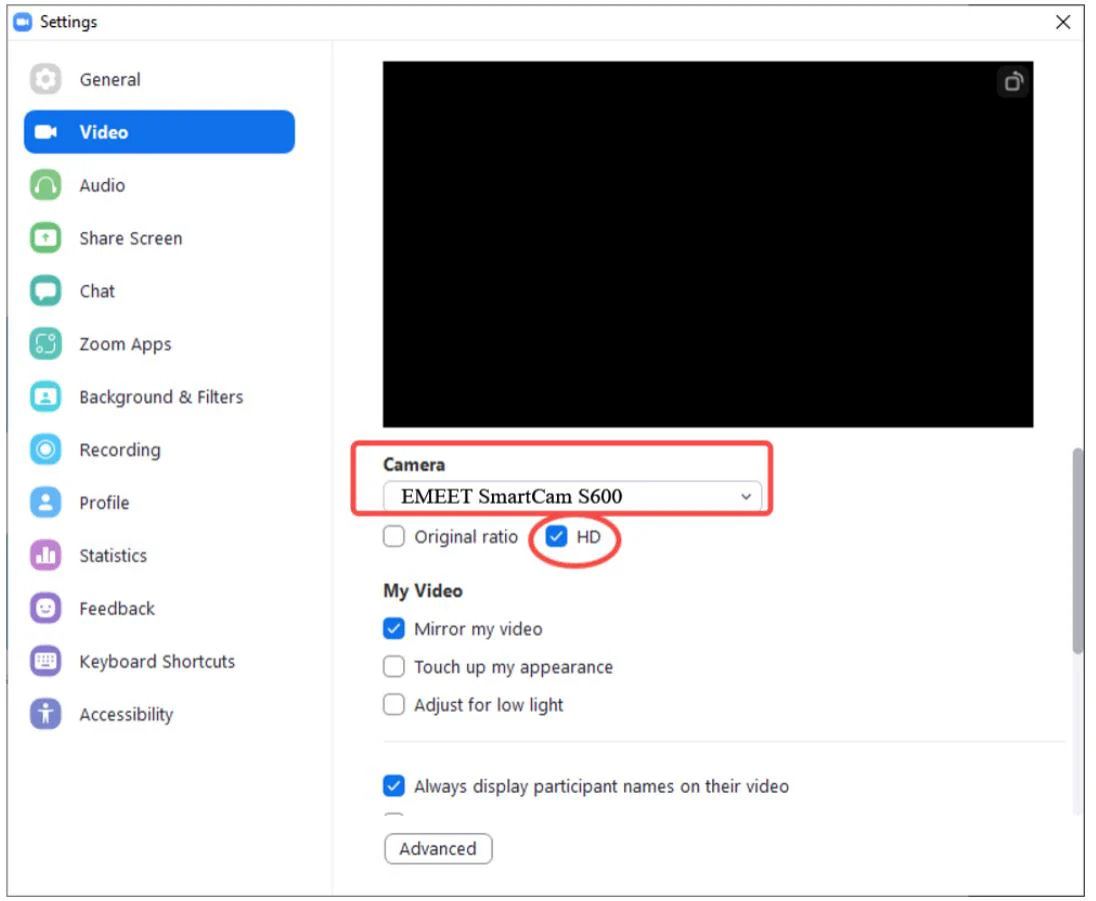
16. How can I modify the resolution on OBS?
You can follow these steps to modify the resolution in OBS software:
(1). Open the OBS software and select the device that you're using from the "Scenes" menu.
(2). Click on the "+" icon in the "Sources" menu on the right, and select "Video Capture Device".

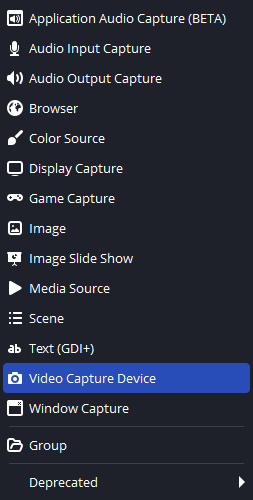
(3). In the pop-up window for the device's properties, click on "Device" and select the device you want to use.
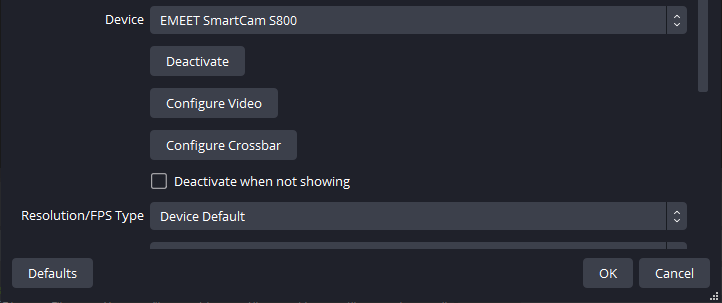
(4). Under "Resolution/FPS Type", select "Custom" from the drop-down menu and choose the desired resolution from the "Resolution" section below it.

(5). Click "OK" to save the changes and close the settings window.

Note: Changing the resolution may affect the video's quality and smoothness, depending on your hardware and network settings.
17. What scenes is S800 suitable for?
S800 is suitable for a variety of scenes, including gaming live streaming, beauty live streaming, live selling, podcasting, conferences, and offices.
18. What are the compatible systems and versions of S800?
For Windows systems, S800 is compatible with Windows 10 (64-bit) or higher, and requires an Intel or AMD CPU, an Intel, Nvidia or AMD GPU, and a USB 3.0 or higher connection with a Type-C port.
For macOS, S800 is compatible with macOS 11.0 or higher, and requires an Intel, Apple Silicon CPU, an Intel, AMD, Nvidia or Apple Silicon GPU, and a USB 3.0 or higher connection with a Type-C port.
Usually, to operate live streaming, a RAM of 2GB or more is recommended.
19. Why does green border occur when using green screen for live streaming?
S800 does not come with a built-in chroma key function. A green border may appear when using green screen due to factors such as lighting and venue. The following tips are recommended:
1. Choose a green screen that is non-reflective, non-transparent, and has accurate color uniformity. The green screen should also be laid out flat without any wrinkles.
2. Light the green screen as evenly as possible, without creating any shadows. The lighting should not be too bright or too dark. Overexposure can lead to loss of detail and excessive green reflection, causing a green border.
3. Keep the green screen as far away from the subject as possible to minimize reflection interference. The green screen should not be too large to avoid more green reflection interference on the subject. The green area in the scene should be kept to a minimum.
4. Adjust the brightness, clarity, and other parameters in the live streaming software slowly until the best effect is achieved.
20. What video encoding formats are supported by S800?
S800 supports MJPEG, YUY2, and H.264 video encoding formats.
21. What is TOF focusing?
TOF focusing is a camera technology that uses Time of Flight (TOF) imaging to measure the distance between the camera and the subject being photographed. This enables more accurate autofocus and better low-light photography.
22. What is the difference between TOF focusing and automatic focusing?
TOF focusing and automatic focusing have some differences. Automatic focusing is a technology that uses the camera lens to measure the focus in the photo and adjusts the camera's focus distance automatically to make the focus clear based on the measurement result.
TOF focusing uses time-of-flight camera technology to calculate the distance to the object, and when adjusting the focus, it prioritizes the distance to the object, so it can focus more accurately.
In addition, TOF focusing can work better in low-light environments because it does not rely only on visible light.